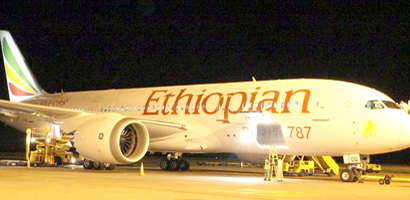human traffickingFeatures
Mordenising Air Transport Through the NRM Manifesto
 By Ignie Igunduura
By Ignie Igunduura
By establishment of the Civil Aviation Authority (CAA) in 1991 the air transport industry in Uganda was in a discreditable form. The aeronautical infrastructure such as taxiways, resulting in declining passenger traffic. Only 9 airlines were flying to Entebbe Airport by 1991. The annual passenger numbers had dropped to 118,000 international travelers and cargo declined to a paltry 5200 metric tonnes in the same year.
Due to the state of affairs, Uganda was facing global isolation by key air transport players.
In 1991 the National Resistance Movement (NRM) government established the CAA with a mandate to revamp the air transport sub-sector. The Authority was mandated to operate on commercial principles and promote the safe and orderly growth of civil aviation in and outside the country.
In order to realize the mandate, the Authority chose a phased approach for implementation of the facilities upgrade plan. Between 1991 and 2001 focus was put on rehabilitation of aeronautical infrastructure and air navigation and communication equipment.
Following the $52m Danish and Spanish government support to Uganda resuscitation of the aeronautical infrastructure at Entebbe Airport commenced in1992. Works included reconstruction of Runways and Taxiways and refurbishment of passenger facilities.
Capacity Expansion Phase
Following completion of the rehabilitation and refurbishment phase of Entebbe Airport between 1991 and 2001 the CAA embarked on capacity expansion.
A study carried out in 2001 by an international transportation firm (the LPA Group) to identify strategies to develop the airport made recommendations which CAA adopted in 2002. The study recommended expansion of the Arrivals and Departure areas, construction of a Domestic Operations terminal, a modern cargo centre and replacement of the air traffic management radar. The recommendations were in tandem with the aspirations of the NRM Manifesto 2001 and 2006.
In 2006 major works started with the expansion of the Arrivals Hall to provide better and hassle-free immigration and customs services to arriving passengers. Modern, 90-metre long baggage conveyor belts were installed to smoothen the baggage reclaim process.
Besides enlargement of the check-in area, the Departure facilities had a modern passenger Handling System installed to expedite departure formalities.
Aircraft parking capacity was boosted with construction of a new 60,000 square feet apron. Entebbe Airport now parks 60 medium-size jets at its four aprons. Plans are underway to further expand the aprons to accommodate more aircraft. The expanded apron accommodated the CHOGM executive jets in 2007.
An ultra-modern VVIP reception facility was also constructed, enhancing the country’s ability to receive several State guests simultaneously. The CAA is also planning to construct a Domestic Operations Terminal, to ensure separation of domestic from international passengers as recommended by the International Civil Aviation Organisation (ICAO). To enhance safety, an Air Traffic Control Radar was installed in October 2007 to ease management of the airspace.
Traffic Response
An automated car-parking management system was installed in 2010 to ease vehicle movement in and out of the airport. The long term plan is to construct a storeyed car-parking facility.
The 2006 expansion works increased immigration counters from 4 to 14. Two Passenger Boarding Bridges were installed. More bridges are to be added under the Terminal building expansion programme envisaged by the new Master Plan. Five security watch towers were also erected at the airport to enhance surveillance.
As is the norm, improved airport facilities and services attract new air operators who in turn increase air traffic to the country. This explains why Uganda’s exports to world markets by air recorded an impressive 24% annual average growth for the last six years.
The infrastructural improvements scaled up international passenger traffic at Entebbe Airport from 118,000 in 1991 to 1.4 million by December 2013. The airlines flying to Entebbe increased from 9 to 20 in the same period.
2006/2011 Manifesto Implementation
The sectoral legacy of hosting the Commonwealth Heads of State and Government (CHOGM) meeting is positively evident. Confidence in the country’s air transport system and facilities grew, leading to the traffic upswing.recording an annual average growth of 8.5% in 2013, surpassing Africa’s average projection of 5.3% compound annual growth rate.
Other efforts to enhance aviation safety, security and service, in line with the 2011 NRM Manifesto have also been exerted. These include the Shs.10 Billion Gulu Runway repair works, commencement of works for rehabilitation of Nakasongola Airport at a cost of Shs. 28.4 Billion and construction of a 100,000 capacity passenger Terminal at Arua Airport.
Master Plan studies and engineering designs for Gulu and Kasese Airports were also completed. A Consultancy to carry out a similar study for Arua Airport is under procurement.
System improvement efforts instituted by the Authority also include inter alia, implementation of the e-document system, enhancement of the flight information display system and a robust staff training programme to keep pace with the rapidly changing aviation technology.
2014-2033 Master Plan
The transformation created capacity challenges, prompting a review of the 2002/2022 Master Plan. Following the reiew and going by the passenger numbers that have since outstripped projections the Authority developed, with ICAO support, a 20-year (2014-2033) national Civil Aviation Master Plan (CAMP).
During the 2006/2011 Presidential election campaigns, President Yoweri Museveni presented manifestos that touched virtually every sector of the economy. Key in his pledges to Ugandans was transformation of the air transport industry. This involves expansion of the passenger terminal building at Entebbe and upgrading of upcountry aerodromes of Arua, Kasese, Soroti, Jinja, Tororo, Adjumani, Moyo and Nebbi. The ultimate is to develop a national aerodromes network with international standards.
A new Airport is to be established at Kabaale in the Albertine Graben region to facilitate the planned oil refinery and associated businesses. The process for procurement of a Consultancy to develop the Airport’s Master Plan and detailed engineering designs is in the furnace.
The CAMP will also map direction for development of an aircraft maintenance Centre, a new cargo terminal, new passenger terminal and a stoyered car-parking facility at Entebbe. The long-term plan for Uganda is to pick a piece of the international passenger “pie”, projected to level off at 3.91 Billion by 2017.
Comments


















